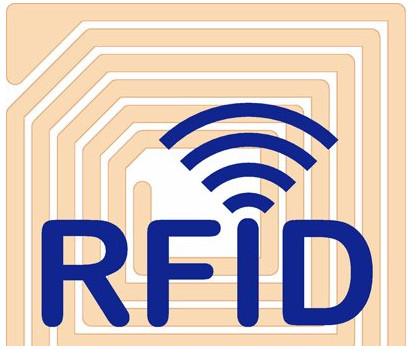RFID has many similarities with NFC. In addition to applications and frequency bands, they also share many industry standards. Today, we introduce two of the more commonly used standard protocols. RFID: Many people's perceptions of RFID come from an IBM advertisement: a young man shopping in a supermarket wanders into a windbreaker and gets a bill directly at the checkout counter without having to pay for it. This advertisement is a very vivid demonstration of the application of RFID technology in daily life. RFID (radio frequency idenTIficaTIon) is an automatic identification technology that uses radio waves for communication. The basic principle is to communicate data by electromagnetic coupling or inductive coupling between the read head and the label attached to the object to achieve automatic identification of the label item. Automatic identification refers to a technique in which a certain identification device is applied to automatically acquire relevant information of the identified item through the proximity activity between the identified item and the identification device, and provide the background computer processing system to complete related subsequent processing. The main frequency bands of RFID are: 125 kHz, 134.2 kHz, 13.56 MHz, 860-960 MHz, 2.45 GHz and 5.8 GHz. RFID systems with different operating frequencies have different working distances and different application fields. Low-frequency (LF, 125kHz, 134.2kHz) RFID systems are mainly used for animal identification, factory data collection, etc.; high-frequency (HF, 13.56MHz) RFID system technology is relatively mature, widely used in access control, intelligent transportation, etc. The LF and HF bands work in inductive coupling mode, and the general working distance is small. The RFID system of ultra-high frequency band (UHF, 860-960 MHz) can effectively reach a working distance of 3-6 meters. It is suitable for logistics, supply chain and other fields. . The microwave frequency band (2.45 GHz and 5.8 GHz) is applied to container management and road toll. UHF and microwave frequency bands are used in electromagnetic coupling mode, and the working distance is far. NFC: NFC is the abbreviation of Near Field CommunicaTIon, which is short-range wireless communication technology. Developed jointly by Philips and Sony, NFC is a contactless identification and interconnect technology for close-range wireless communication between mobile devices, consumer electronics, PCs and smart control tools. NFC provides a simple, touch-enabled solution that allows consumers to easily and intuitively exchange information and access content and services. Currently, the NFC Forum has more than 70 members worldwide, including: MasterCard International, Panasonic Electronics, Inc., Microsoft, Motorola, NEC, Renesas Technology, Samsung, Texas Instruments, and Visa International. . NFC is developed on the basis of RFID. NFC is essentially not much different from RFID. It is based on signal transmission between two objects with similar geographical locations. ISO/IEC 15963 ISO15693 is an international standard for RFID applications that defines the air interface and data communication specifications for smart tags and readers operating at 13.56Mhz. Labels that meet this standard have a maximum reading distance of 2 meters. The minimum field size is 0.15 A/m and the maximum value is 5 A/m. The encoding method of the reader to the tag adopts pulse position modulation and supports two encoding modes, namely 256 select 1 mode and 4 select 1 mode. When the 256 selects 1 mode, the communication rate is 1.54KBIT/S, and when it is 4 select 1 mode, the communication rate is 26.48 kbits/s. The data encoding of the tag to the reader is Manchester coded. The communication rate varies according to the way the signal is debugged. As shown in the following table, the tag supports both high speed and low speed: ISO/IEC 15963 application 1) Personnel channel The personnel channel is the most representative product of ISO15693 standard. The product generally supports label recognition in 1D or 2D direction. The typical label reading distance is more than 120cm. It is widely used in personal identification, conference sign-in, library management, and access control. , item tracking, anti-counterfeiting, warehousing and logistics. 2) Omnidirectional channel Supports the three-dimensional reading of the label, the channel spacing can reach more than 90cm, supports EAS, AFI detection mode, supports offline application and multi-antenna parallel use, can automatically count and display the number of people entering and exiting. Mainly used in the field of book theft, identity, conference sign-in, access control, item tracking, etc. 3) Smart bookshelf The intelligent bookshelf is a high-performance real-time management system for books in the library. It uses RFID technology to realize the identification of item-level items in the books, and can complete the functions of library book monitoring, inventory, book query positioning, and wrong frame statistics. The intelligent bookshelf system has the characteristics of fast detection speed and accurate positioning. Can be applied to books, archives, file management and other fields. ISO/IEC14443 ISO14443 is an RFID international standard for near-field communication for radio frequency identification applications. The maximum reading distance supported by it is 10cm. The ISO14443 standard defines the air interface and data communication specifications for smart tags operating at 13.56Mhz. ISO 14443 specifies the data transmission between the two readers and the near-coupling IC card: Type A and Type B, Type A and Type B. The standard supports a minimum data communication rate of 106 Kbps and supports up to 848 KBPS. Type A was first developed and used by semiconductor companies such as Philips (NXP). It is the most widely used protocol standard in the world. It uses ASK 100% AM modulation mode from PCD to PICC, and OOK subcarrier from PICC to PCD. Debugging mode. Type B is an open contactless smart card standard. It uses ASK 10% AM modulation mode from PCD to PICC, and BPSK subcarrier debugging mode from PICC to PCD. ISO14443 application The ISO14443 standard is mainly used in the field of close-range security identification for personnel management and micropayment. The main application areas are, card, member management, personnel attendance, shopping card, identification, electronic documents and so on. Smart Ceiling Fan,Intelligence Ceiling Fan,Five Blades Ceiling Fan,5 Blades Ceiling Fan Jiangmen MagicPower Electrical Appliances Co.,Ltd. , https://www.magicpowerfan.com
